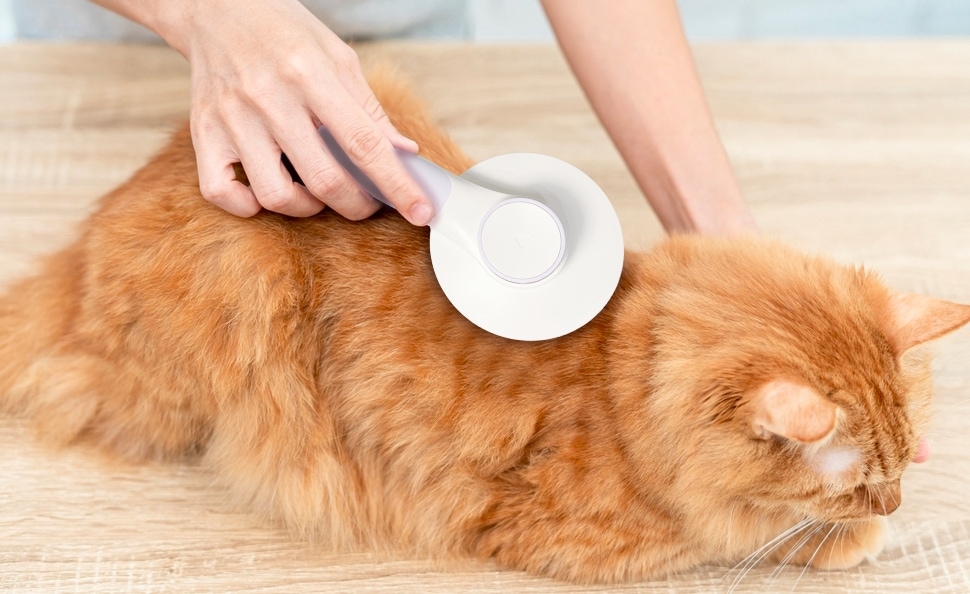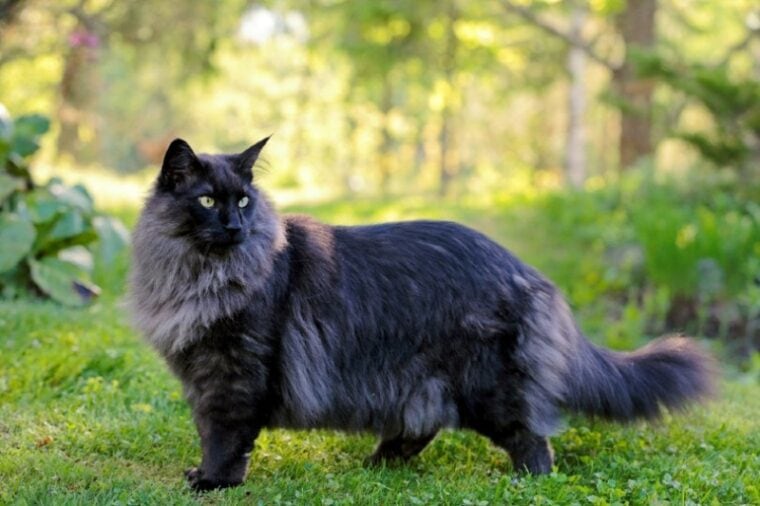
If you’ve ever met a Norwegian Forest Cat, the first thing you’ll notice is their majestic, almost mythical appearance. The second is their coat—and how much there is of it! Norwegian Forest Cats are known for their affable, laid-back demeanor and for not being too demanding of human attention, but they do need a bit of extra TLC grooming-wise like other long-haired breeds.
The good news is that though Norwegian Forest Cats do shed seasonally and require grooming, they’re a little less prone to matting and tangling than other long-haired breeds. As daunting as it may be when you take stock of the mass of fur you’re going to be dealing with, there are ways and means to make it as easy and pain-free as possible for both you and your cat.
If you’re feeling a bit lost as to where to start with your Norwegian Forest Cat’s sublime coat or with other areas of grooming like nail trimming and teeth brushing, the below tips may be helpful.
The 9 Steps to Groom a Norwegian Forest Cat
1. Equip Yourself with the Right Tools
For long-haired cats, it’s always a good idea to have a few basic tools at the ready—a de-shedding tool, a slicker brush, a comb, a cat toothbrush, and a pair of cat claw clippers.
If you’re new to brushing tools, the de-shedding tool removes the undercoat that Norwegian Forest Cats shed heavily during shedding seasons (typically spring and fall) and moderately throughout the rest of the year. These really help you out during heavy shedding periods and are great for preventing loose undercoat build-up and matting.
A slicker brush helps to remove dead hair and mats from the fur and is perfect for daily brushing, whereas a comb helps to detangle and spruce up the coat if need be.
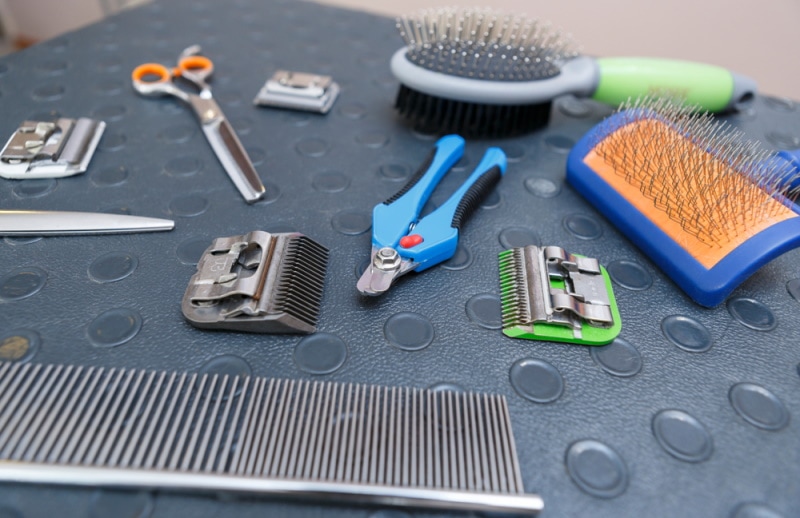
Grooming your cat is a process that they either love or hate. If your kitty tends to despise their grooming sessions, you can make it a bit more enjoyable with our favorite brush on the market, the Hepper Cat Brush.
- ONE PUSH RELEASE - This kitten brush / cat brush pops out fur with just a simple press, leaving you...
- DURABLE - Cat shedding can be a tough ordeal. Made of resilient ABS plastic and metal bristles with...
- COMFORTABLE - A cat fur brush with 60 degree angled, fine bristles and rubber stoppers will bring...
With its soft pins and a one-click button for easy clean-up, this brush is something that both you and your cat will enjoy.
At Pet Keen, we’ve admired Hepper for many years and decided to take a controlling ownership interest so that we could benefit from the outstanding designs of this cool cat company!
2. Let Your Cat Get Used to the Tools
If your Norwegian Forest Cat isn’t used to being brushed, give them some time to sniff / paw at / rub against your grooming tools before you get started. This allows them to become accustomed to the objects gradually and will hopefully help them feel less stressed when you start brushing them, cleaning their teeth, or trimming their claws.
3. Brush the Back First
Start by gently grooming your cat’s back, especially if they’re not accustomed to grooming tools. To your kitty, their tummy is a vulnerable spot, so if you start there, things might not end well for you. Lightly brush their back a few times to gauge their reaction. If they seem afraid or run away, they may need a little more time to get used to the tools. Only attempt the belly and legs when your cat feels a bit more comfortable.
4. Treats Are Your Friend
Each time your cat sits through grooming for a certain period, no matter how short, reward them with one of their favorite treats. This teaches them to associate the procedure with something positive.
5. Go Easy on Mats and Tangles
This goes without saying, but, when tackling mats and tangles, try working on them slowly and gently with your fingers, and, if that doesn’t work, try carefully detangling the mat with a slicker brush or de-matting tool.
If you’re afraid of hurting your cat or the mat is just too big for you to deal with on your own, it’s best to recruit a professional groomer.
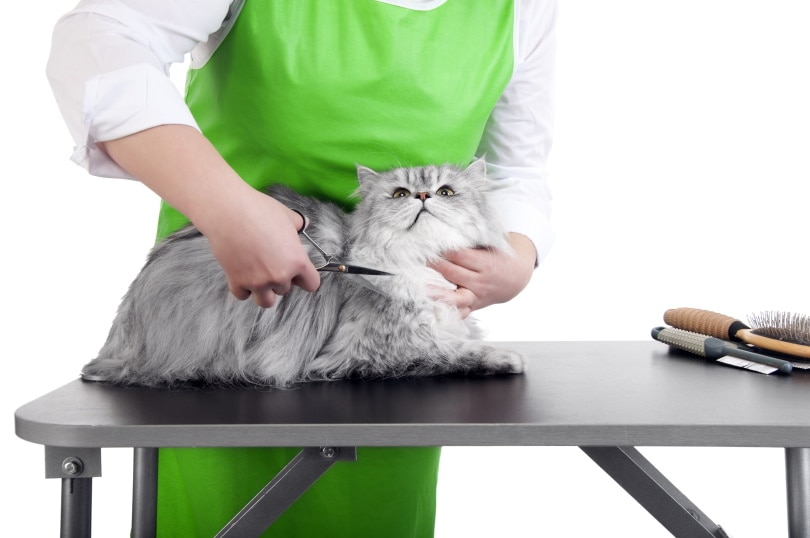
6. Brush Daily
The best way to prevent mats from forming and to keep your cat’s skin and coat as healthy as possible is to brush them regularly. For long-haired cats, brush daily. This may sound like a lot of work, but it’s better to put a little time aside every day for a quick brush-over rather than end up with a matted coat which will require even more work to put right.
Daily brushing is also great for circulation, spreading healthy oils throughout the coat, and building a bond between you and your cat.
7. Trim Your Cat’s Claws Regularly
According to PetMD, cats’ claws need to be trimmed once every 10 days to 2 weeks to prevent them from becoming overgrown. For this, you’ll need a good pair of claw clippers designed for cats (not human nail clippers or scissors).
When trimming, avoid the pink part, also known as the “quick”, as cutting into this is really painful for cats. Gently squeeze your cat’s paw pad to get the claw to protract. If your cat isn’t taking to it well, contact your vet or a professional groomer for advice.
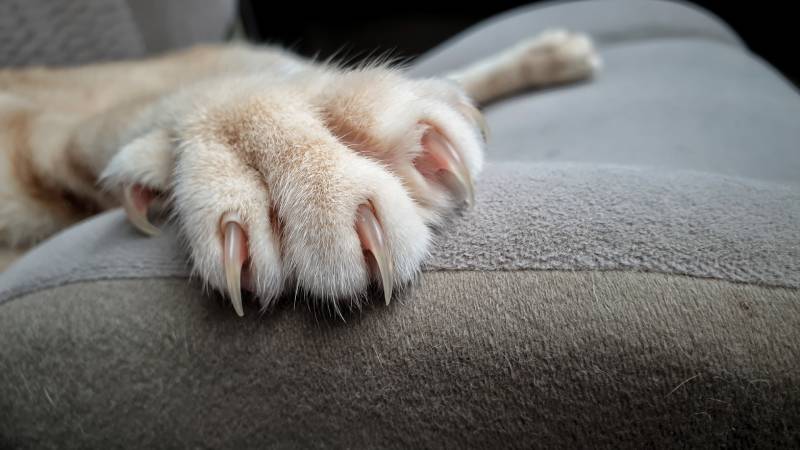
8. Start Slowly with Teeth Brushing
It’s recommended to brush your cat’s teeth 3 times a week to help prevent the build-up of plaque and tartar, which can lead to gingivitis and other dental diseases. To get your cat used to teeth brushing, start with a cotton swab dipped in tuna water to help your cat associate the procedure with something tasty. Run it along some of the teeth and do this in short bursts at first.
When your cat accepts the tuna cotton swab, you can move on to gentle brushing with a cat toothbrush and cat toothpaste. You may need to try the cotton swab trick a few times before your cat starts to be okay with it.
9. Feed the Right Food
As well as filling up your cat’s belly, what you feed your cat is important in terms of how it affects their skin and coat. Choose a high-quality, healthy food with all the nutrients your Norwegian Forest Cat needs to help keep their coat shiny and their skin in good condition. This, in turn, makes your life easier grooming-wise.
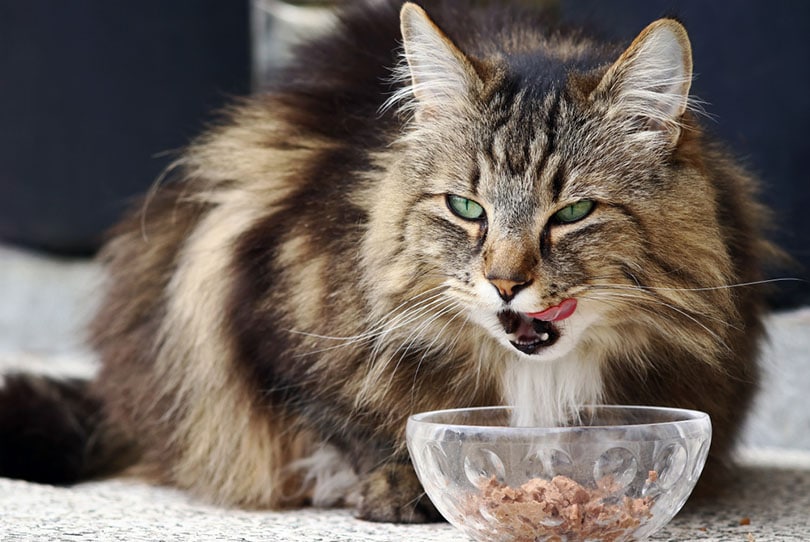
FAQs
Are Norwegian Forest Cats High Maintenance?
For Norwegian Forest Cats, brushing and de-shedding are important, but they’re not as prone to matting and tangling as some other long-haired breeds. In terms of teeth brushing and nail clipping, their needs are the same as other breeds.
Why Is My Norwegian Forest Cat Losing Their Fur?
It’s normal for Norwegian Forest Cats to shed a lot during shedding seasons (typically spring and fall) and moderately year-round, but if you spot patchiness or dryness and /or redness of the skin, contact your vet to check for underlying health issues or allergies.
Conclusion
The best grooming tip for Norwegian Forest Cats is to brush them daily to help prevent knots, mats, and tangles from building up. Deshedding tools are another crucial piece of equipment, particularly in shedding season, as Norwegian Forest Cats shed so much during these times that the pile of hair resembles a second cat.
If you’re concerned about your Norwegian Forest Cat’s hair loss or are having difficulties grooming them, please consult your vet or a professional groomer.
Featured Image Credit: Elisa Putti, Shutterstock



